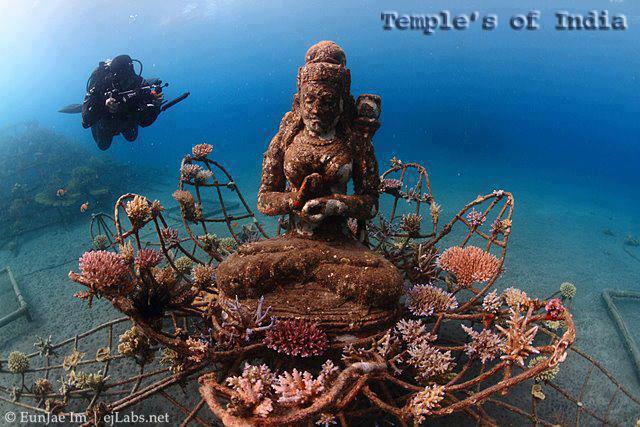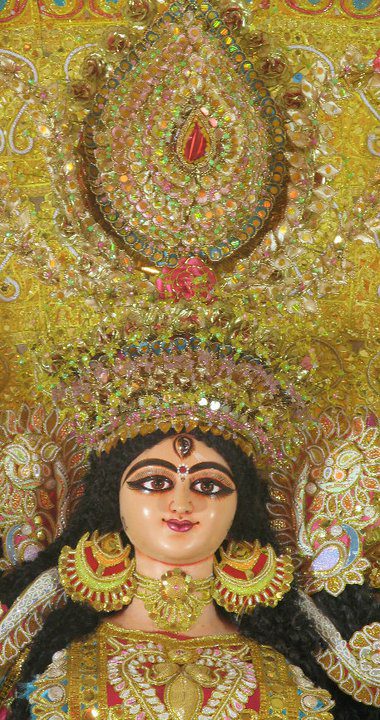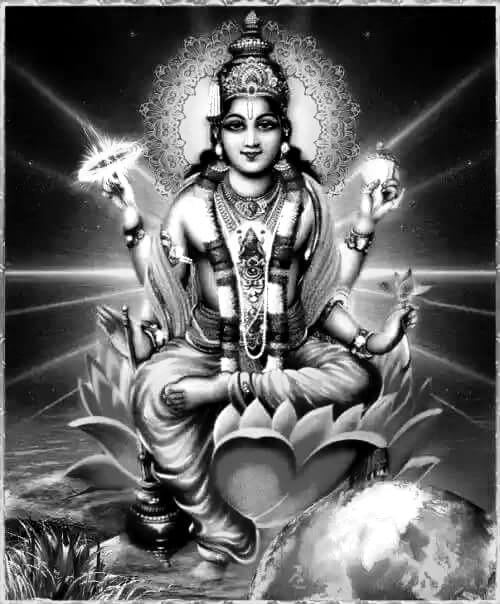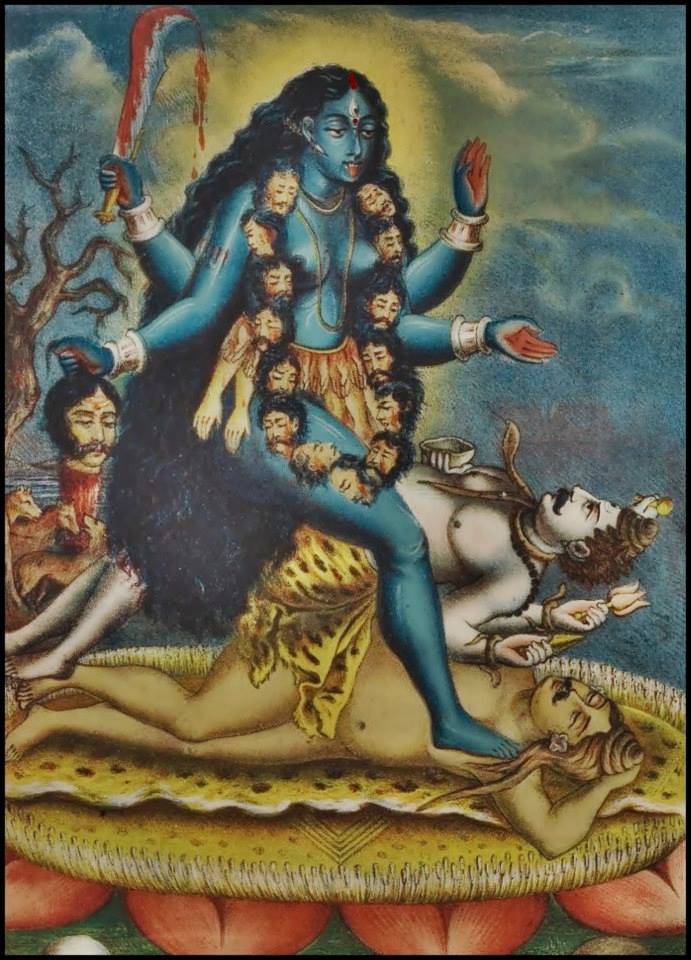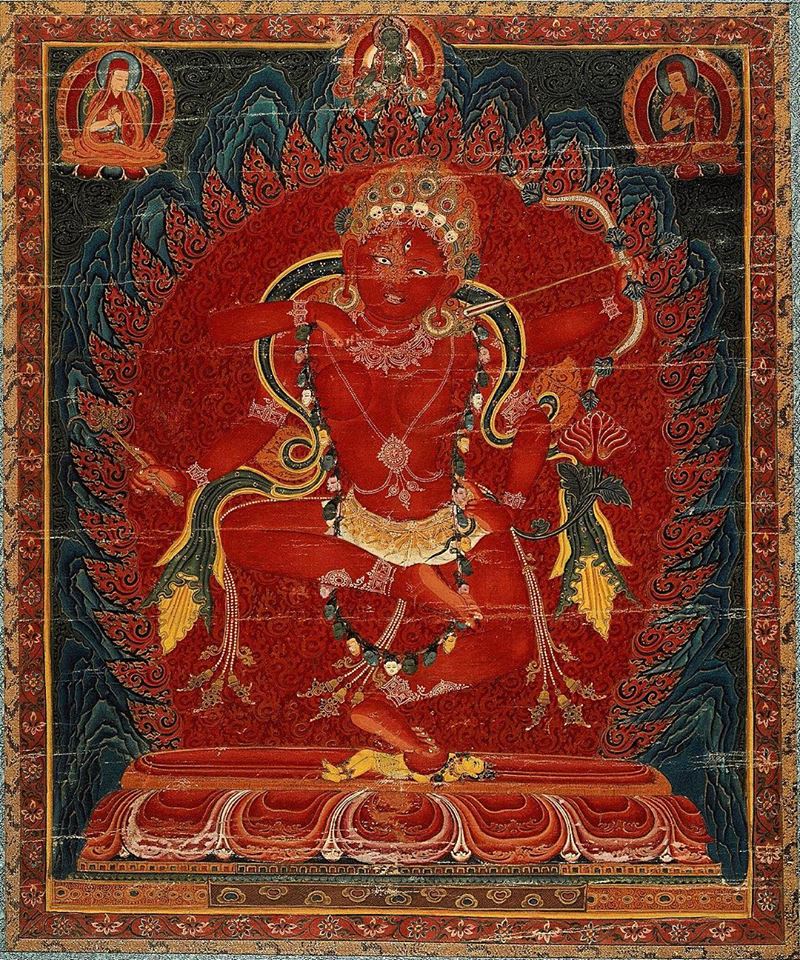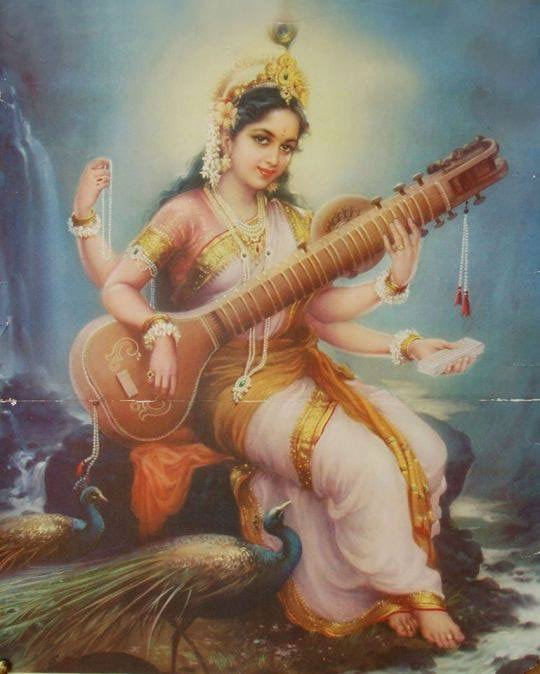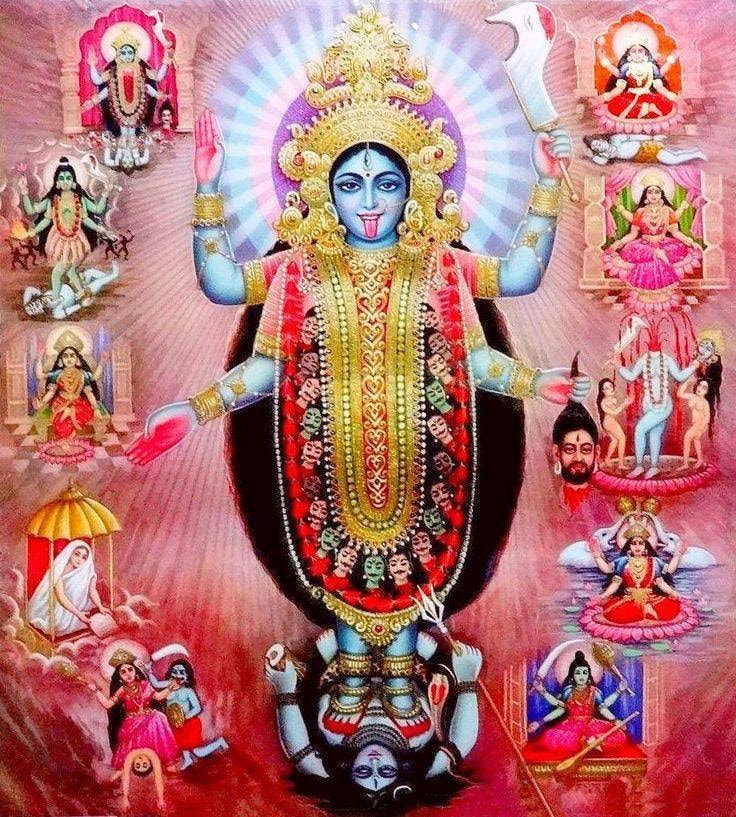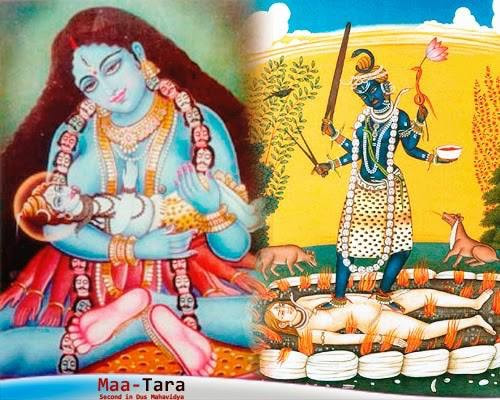
As Shakti, Mother Goddess was supreme untameable universal energy. As Shree, she was the supreme domesticated goddess of fortune, She was also Maya, the supreme unfathomable delusion of existence. She was Prakriti, Mother Nature responsible for earthly existence. From Her came the worldly powers and illusions of arta and kama. Mother Goddess stood at the extreme end of the metaphysical spectrum with their male counterparts who stood more for the unmanifest reality or Pure Consciousness, the Self. Lord Shiva sought moksha, liberation from the material world while Lord Vishnu propounded the doctrine of dharma. But it was Mother Goddess that represented material reality to give life to spiritual reality.
TANTRIK LALITA: Vidya means knowledge, specifically female knowledge, or the goddess, and in this context relates to her aspect called Shri, Lalita or Tripurasundari whose magical diagram is called the Shri Yantra. She is a red flower, so her diagram is a flower too. According to Vamakeshavaratantra, “Tripura is the ultimate, primordial Shakti, the light of manifestation. She, the pile of letters of the alphabet, gave birth to the three worlds. At dissolution, She is the abode of all tattvas, still remaining Herself.”
In the tantrik tradition, symbols have a gross aspect, a subtle aspect, and a supreme aspect. In Her gross form, Mother Lalita, is the image of the goddess with her four arms etc; the subtle form is as yantra, and the supreme form is her mantra. All three are different aspects and colorful symbolisms for realizing the deep wisdom of Goddess Lalita. Realising Her is realising oneself.
The yantra of Devi Lalita is Shri Yantra. The divinity of the yantra always occupies the centre or apex. It refers to the worship of the diagram yantra of that Goddess, which is an epitome of Humankind and the Universe. The Shri Yantra has nine of these mandals, each filled with various aspects of the Devi. In Shri Yantra there are 111 aspects. The Shri Yantra is said to be a geometric form of the human body, which implies that goddess as Macrocosm is one with human being as Microcosm.
Father and Mother are represented in Shri Vidya by two limbs or aspects of Lalita known as Varahi and Kurukulla. The semen of Varahi, the father-form, gives four alchemical dhatus to the child. The ova of Kurukulla, the mother-form, gives five dhatns to the child. Consciousness enters via orgasm. The three bindus, collectively known as Kamakala, digit of sexual desire, are the root potential of sun, moon and fire. It is like sun and moon coming together in an eclipse, or the seed from which the plant human being grows.
SUBHAGODAYA: Lalita loves puja. Subhagodaya by Shivanandamuni is a treatise which details briefly the daily puja of Goddess Devi called Lalita, also known as Devi Maha Tripurasundari. The Great Beautiful Lady of the Three Cities. All creation, manifestation and dissolution is considered to be a play of Devi or the goddess. Her name is the transcendent beauty of the three cities, a description of the goddess as conqueror of the three cities of the demons, or as the triple city, Tripura, but really a metaphor for a human being. Lord Shiva, who is without attribute, is pure Consciousness, the source of light, and Shakti is the mirror in which Shiva knows himself. The Shaktis within the Shri Yantra are the Shaktis or Energies of Supreme Shiva.
BHAVANA UPANISHAD: The functions and faculties of a human being and its relationship with Lalita Chakra are given in this Upanishad. There are said to be three great Lights within a human being. These are Sun, Moon and Fire, Sun is situated in the heart, Moon in the brain, and Fire in the genitals. These three are the Three Beautiful Cities, which collectively form the triple being of Lalita, When these three Lights fully shine, then Pure Shiva, who is the Fourth, is fully manifested. By a daily act of Will, the Universe's Creation, Maintenance and Dissolution takes place.
The universe is also contained within the human body. Stars, planets, rivers, seas, Suns, Moons, even the smallest mote of dust, all these things which appear 'outside' are also found 'inside'. The real act of oblation is the offering of the entire cosmos both active and subjective into the Fire of Pure Consciousness, This is the Bhairava-Mudra, in which there is Self Remembering simultaneously with looking outwards. Realisation is said to consist of the firm knowledge that there is no difference between worshiper and worshiped, between Guru, Mantra, Yantra and Shakti.
BRAHMANADA PURANA: This purana tells the story of Goddess Lalita setting out to destroy Danda. After Daksha’s yagna and Sati’s death, Dakshayani is born as Gauri. Lord Shiva is engrossed in meditation while the Asura leader Taraka creates havoc. Only Shiva’s son could slay the asura. The Lord is not anywhere near Parvathi to conceive the warrior son. Kama, God of love was sent to intervene only to be burnt to ashes. Chitrakarma, Shiva’s host, made a figure from these ashes, which is given life when the Lord casts His eyes.
When Shiva cast his gaze upon this form, it assumed life as an extraordinarily powerful, resplendent person. The figure worshiped Mahadeva with the Shatarudriya mantra that Chitrakarma taught him. Shiva was delighted and blessed him ‘Bhanda’ meaning 'fortunate' as he acquired half of the opponent’s strength. The Daityas had previously ruled the three worlds, now flocked to join Bhanda to rebuild Shotinapur city. The gods also silently served Bhanda and prayed to Mahadeva while sixty thousand years, the wink of Shiva’s eyes, passed.
Now, Lord Vishnu, created an invisible all enchanting Maya to delude Bhanda. He and his Daitya counselors were infatuated and immersed in lust and neglected focus. The sage Narada advised the Gods to destroy the deluded Daityas by propitiating the transcendent Shakti. So they performed a great yajna to worship Parashakti on the Bhagirathi banks for ten thousand years. Shukra warns Bhanda of Daityas being slayed by Vishnu. He was advised to abandon Maya and rush to frustrate the yajna. Bhanda tried to shatter the yajna but Mother Goddess hindered him. He returned to the city to return with more vigour. Now, Shukra holds a maha-yajna offering Mahamamsa, human flesh to worship Shakti.
As this was done, Mahadevi Ambika, as massive wheel-shaped dazzling luster emerged from the flames. The essence of beauty and bliss, she resembled the hibiscus in complexion, wore robes of pomegranate-red and ornaments of all types, bearing noose, goad, sugarcane-bow and five shining arrows in her four hands. The gods chanted the praises of this Kamakshi, Kameshi, Kali, celebrating her as Mother Shri Lalita. The goddesses Durga, presiding deity of all mantras, and Shyama, presiding deity of all lores, joined Shri Lalita. Brahma commands Vishvakarma to built a wonderous city on the spot.
Lalita would not be complete without a consort and there was Maheshvara in the form of Kameshvara shining a million times more than Kama. Lalita garlanded him and was given in marriage by Vishnu. The Devas presented them with various weapons and ornaments. Thereafter, Lalita Devi led an army to conquer Bhanda. Her chariot was huge with 16 steps on which all the other siddhi Devis sat. From Lalita Devi’s noose emerged the swiftly moving deity Ativaritavikranti seated on the horse Aparajita, holding in her four hands the noose, the goad, the cane and the horse’s bridle. They were joined by the boar-faced Shakti Krodhamukhi leading an army carrying palm-leaf fans set with diamonds and dark Mantranayika on a chariot.
In the battle Lalita faced Banda. He released the Mahasurastra from which Madhu, Kaitabha, Mahisha, Dhumralochana, Chanda, Munda, Chikshura, Chamara, Raktabija, Shumbha, Nishumbha, Kalakeyas arose and smashed the army of Shaktis. Lalita became furious and burst into a loud angry laugh. From this appeared Durga. She stuck down these Danavas, bowed to Lalita. Bhanda now discharged the arnavastra, flooding the field, whereupon the goddess created a huge tortoise from the nail of her index finger who supported her armies.
Thereafter Banda discharged missiles named after Hiranyaksha, Hiranyakashipu, Bali, Shasrarjuna, Paulastya, Rajasura, Kali and Mahamoha. They were countered by the Goddess Lalita creating from her nails Varaha, Nrisimha, Vamana, Parashurama, Kodandarama, Vasudeva-Samkarshana, Pradyumna and Aniruddha, Kalki and finally Shambhava. Ultimately, by the Narayana missile, she burnt up the entire army of Danavas, followed by the Pashupata missile which killed the generals. Finally Lalita killed Bhanda with the Mahakameshvara missile.
TEMPLE: The Thirumeeyachur Lalithambika temple is located in Thiruvarur District , west of Peralam village.The presiding deities are Lord Meghanatha and his consort Goddess Lalitambika. Mother Lalitambika’s shrine is adorned by a five-tiered Rajagopuram. Her five-feet deity is installed over Sri Chakra in the sanctum sanctorum. The deity is seated resting her folded right leg on the seat. Her left leg is in Sukhasana posture. She is said to be in Manonmani Swaroopa and hence is also known as Santanayaki. It is said that Rajendra Chola and Sembian Maadevi renovated this ancient temple.
Sthala purana of the temple speaks of Kashyapa Maharishi and his two wives - Karththuru and Vinathai. The wives had a dispute over the black spot on the tail of Uchchaisiravas , the Horse of Indra. Repenting the erstwhile dispute, they came to Thirumaiyachur and worshiped Lord Meghanadhar. They were blessed and given an egg each for splendid sons. Thus Garudan and Arunan were born respectively.
Once Arunan took the form of Mohini like a charming girl . The Sun God, Surya, harmed her. When Arunan pleaded to the Lord Shiva here, he cursed Sun god Surya to get darkened. By Siva’s curse, Surya body was badly burnt and he prays to Lord Shiva. He was advised to undergo severe penance, so Surya does Tapas in Thirumeeyachur for seven months.
Surya Bhagavan is believed to have worshiped Lord Siva as Gajaaruda seated on an elephant among thick clouds. During his tapas, Surya started screaming to regain the color of his body. Goddess Parvathi who was in close quarters with Lord Shiva in their private confines, was very much disturbed by the scream. So She was about to curse Surya. Surya was already suffering Lord Shiva’s curse. He is only looking for relief, said Shiva and pacified Parvathi as he held her cheeks. Lord Shiva blessed her to be in peace as ‘Shanta Naayagi’ . Since Shiva himself asked Lalithambigai to be calm, the angels called ‘vasini devatas’ emerged from mouth of Mother and sung the thousand holy names in praise of Goddess which came to be known as Lalitha Saharanaamam.
Hayagrivar conveyed Lalita Sahasranamam to sage Agasthiyar. He came to worship Mother and salute her. He later sung the Lalita Navaratnamala and did amla phaladi krana puja as Surya did to honour Mother. Agasthyar also composed a hymn named Rahasyanamasahasram. It is said that Yama Dharma Raja also worshipped Mother Shakti here. Later day Saivite saints Tirugnana Sambandar and Tirunavukkarasar have also sung Mother’s praise.
LALITA SAHASRANAMA: This stotra is a dialogue between Hayagriva, an avatar of Mahavishnu and the sage Agasthya. The sage is said to be initiated into this sahasranama at the Thirumeyachur Temple. There is also a version that states that Agastya was initiated at the Upanishad Brahmam Mutt at Kanchipuram. Sahasranama is said to be composed by eight vaag devathas under the command of Devi Sri Lalitha. They are Vasini, Kameshwari, Aruna, Vimala, Jayinee, Modhinee, Sarveshwari, Koulini. They describe Lalita Devi from ‘head to feet’ – kesadhi padham. Mother’s names are organised in the form of a hymn for parayana-recitations, archana and homa.
Lalita Sahasranama is held as a sacred text for the worship of the Divine Mother, Lalita. It is also used in the worship of Durga, Parvathi, Kali, Lakshmi, Saraswathi and Bhagavathi. Lalita Sahasranama created a mind devoted to mankind, sincere love, unity and to be one with Atman. Thus it is said to be an integral part of life to develop the energy of faith, belief, confidence and determination. Lalita Saharanama also purifies the atmosphere.
LALITA PANCHARATNA STOTRAM or Lalita Pancha Ratnam Stotra is composed by Adi Shankaracharya. It is believed that those who chants Adi Sankaracharya’s Lalita Pancharatnam in the mornings are said to be blessed with knowledge riches, endless fame.
LALITA SAHASRANAMA DHYANAM:
Meditate on that Ambika,
Who has a body of the colour of saffron,
Who has the three graceful eyes,
Who has a jeweled crown ,
Adorned by the moon,
Who always has a captivating smile,
Who has high and firm breasts,
Who has wine filled cup made of precious stones,
And reddish flowers in her hands,
Who forever is the ocean of peace,
And who keeps her red holy feet.
On a jeweled platform.
I imagine of my goddess Bhavani,
Who has a colour of the rising sun.
Who has eyes which are waves of mercy,
Who has bow made of sweet cane,
Arrows made of soft flowers,
And pasanugusa in her hands,
And who is surrounded,
By her devotees with powers great,
As personification of the concept of “aham”
Meditate I do,
On her who sits on a lotus,
On her who has a smiling face,
On her who has long eyes like the lotus leaf,
On her who glitters like gold,
On her who wears red cloths,
On her who has a golden lotus in her hand,
On her who grants all desires,
On her who is dressed with perfection,
On her who gives protection,
On her who has soft heart to her devotees,
On her who is Sri vidya ,
On her who is forever peaceful,
On her who is worshipped by gods,
And on her who gives all wealth.
Meditate on her,
Who applies saffron on her body,
Who applies musk attracted by bees on her,
Who has a beautiful smile,
Who has with her bows, arrows and Pasangusa,
Who attracts all the souls,
Who wears red garland,
Who wears ornaments great,
And who is of the colour of the red hibiscus.
Hara Hara Mahadeva
By Yogi Ananda Saraswathi



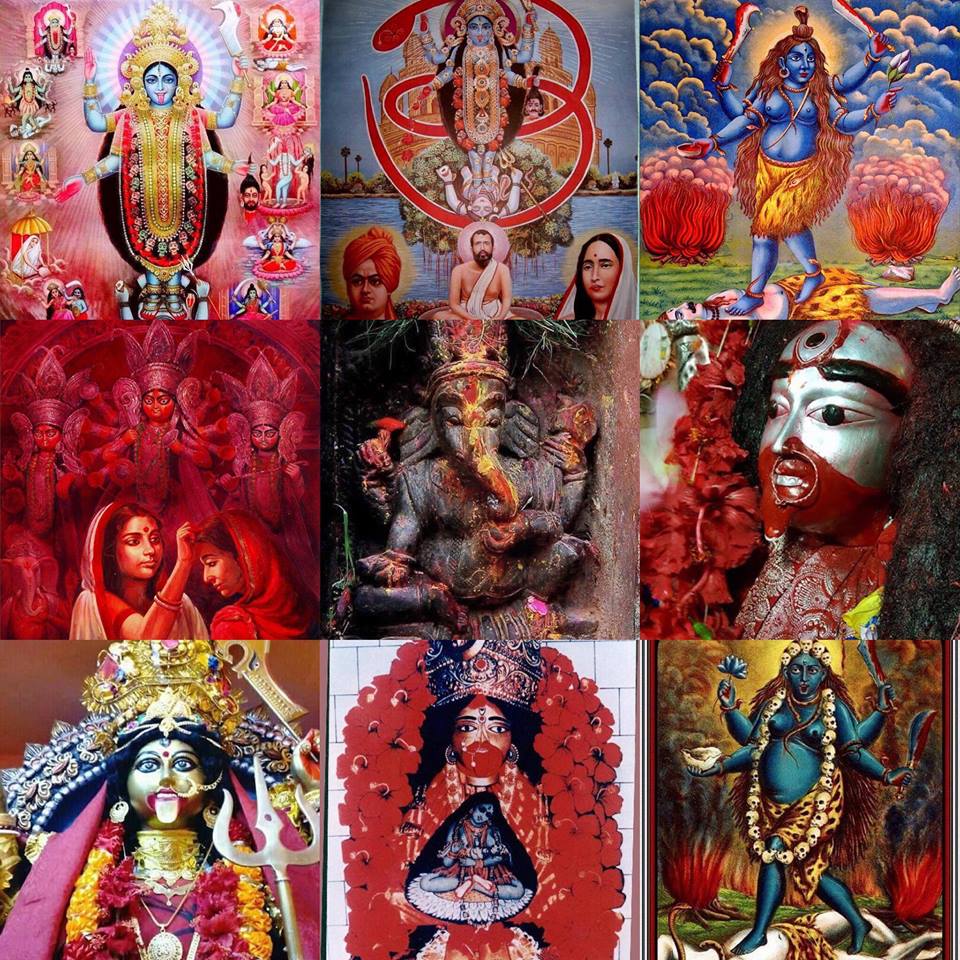
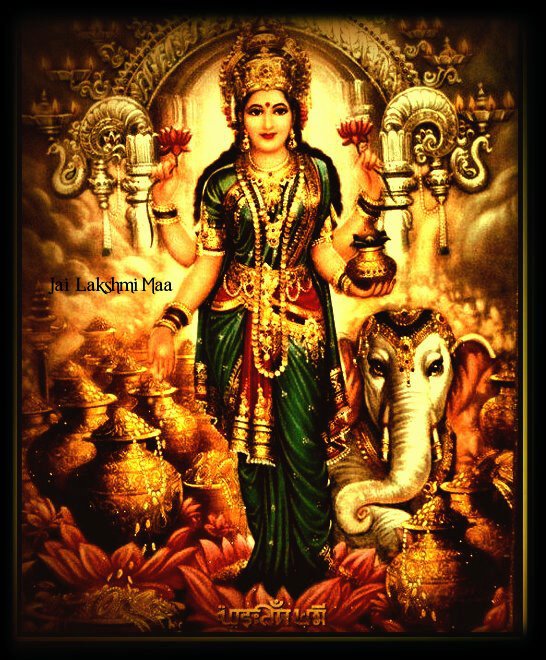

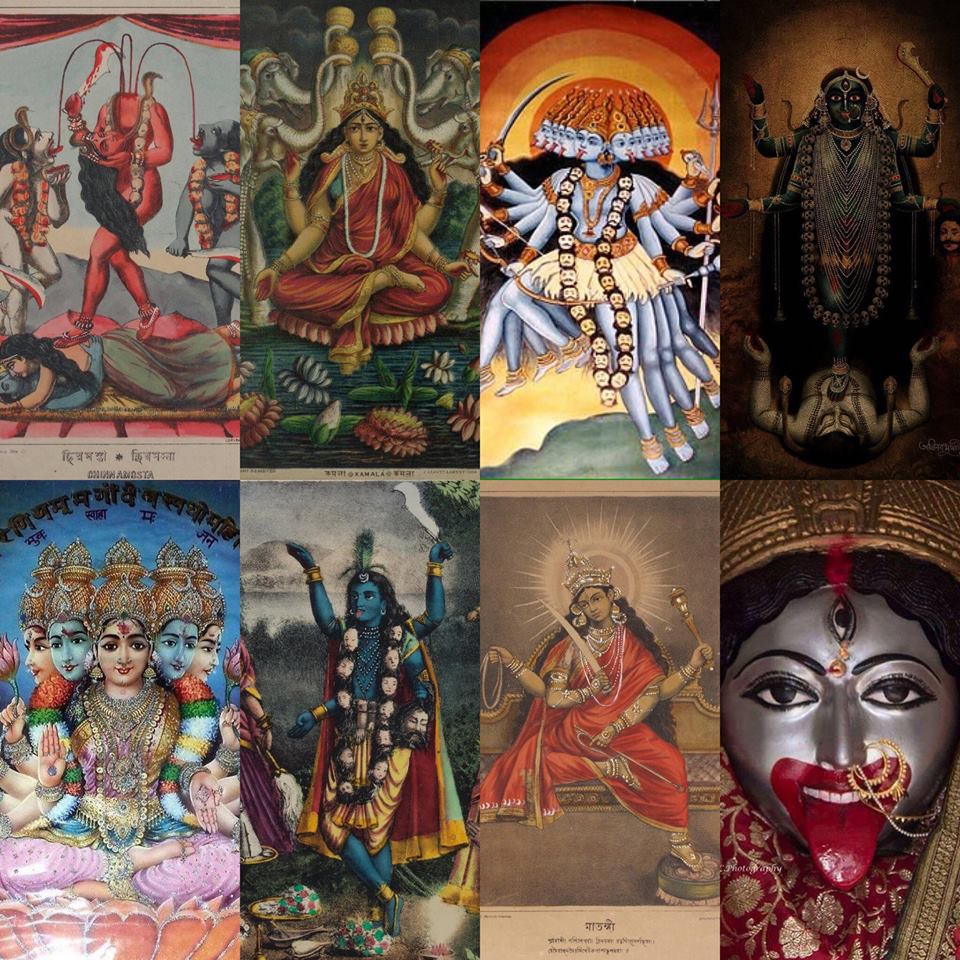
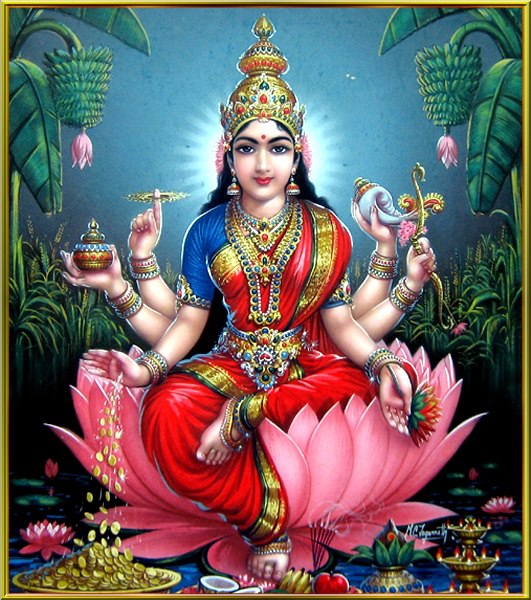



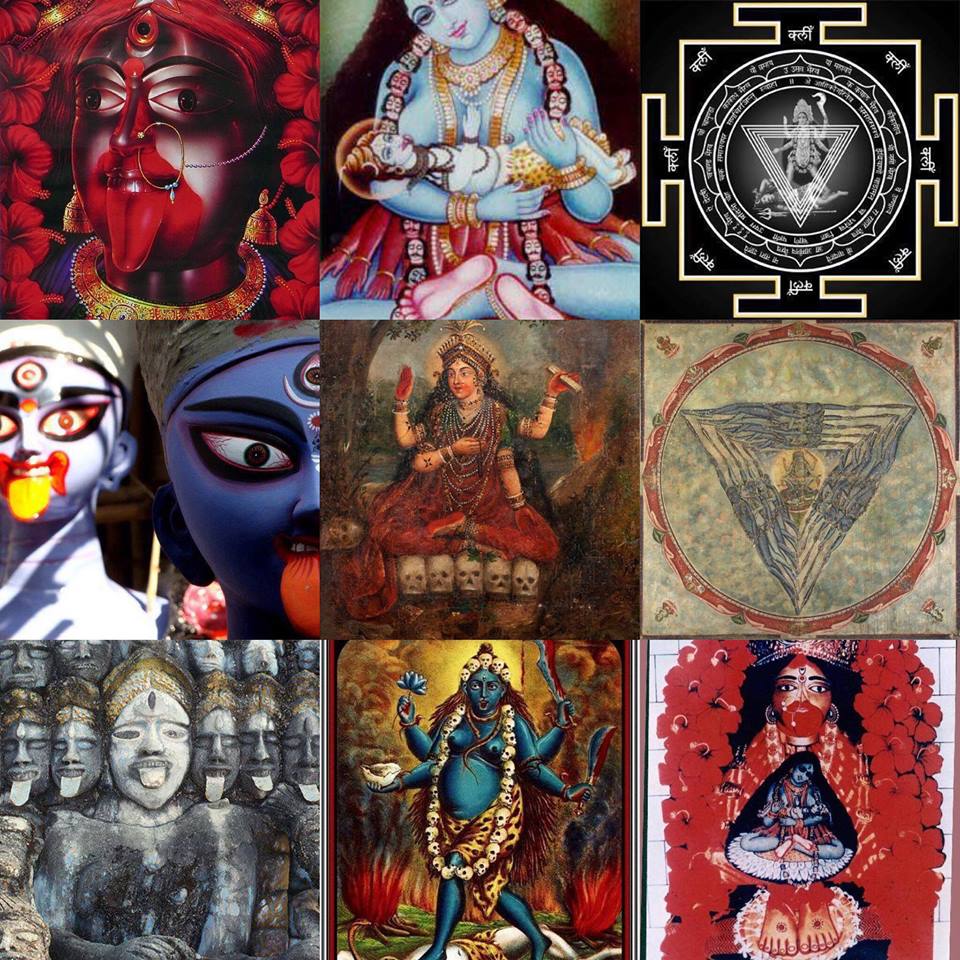


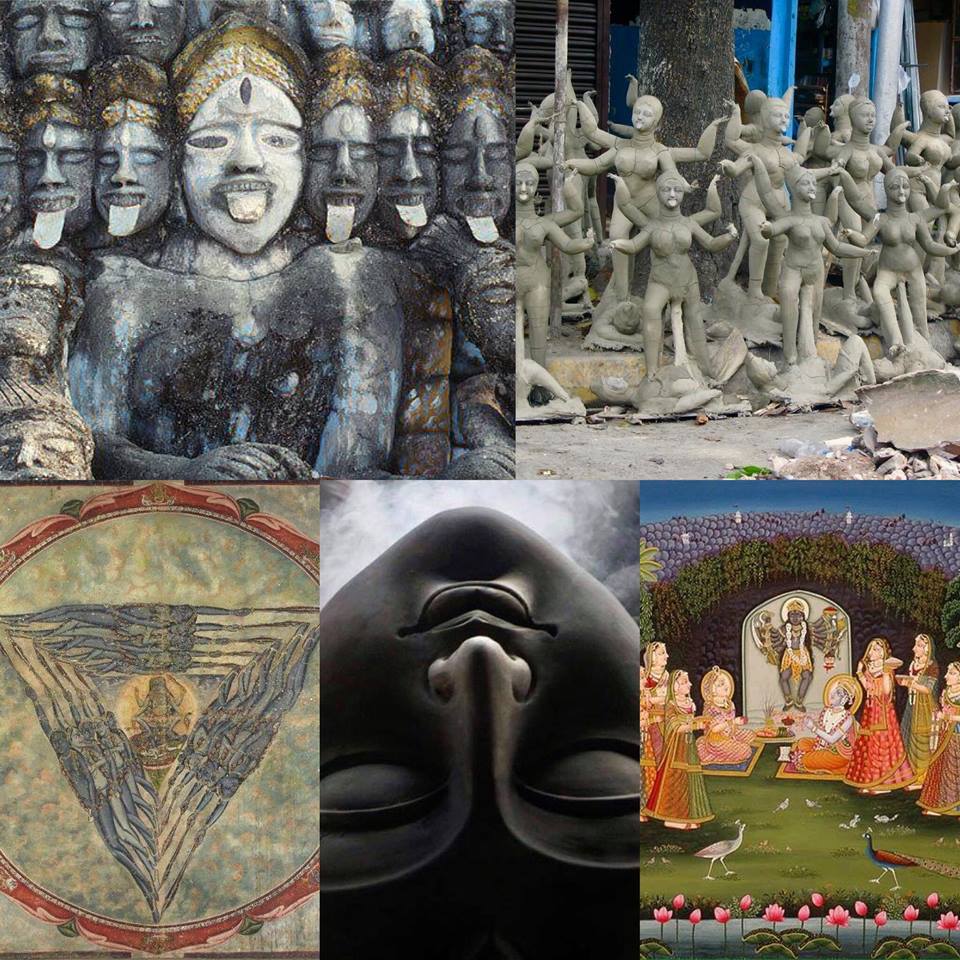







 RSS Feed
RSS Feed























